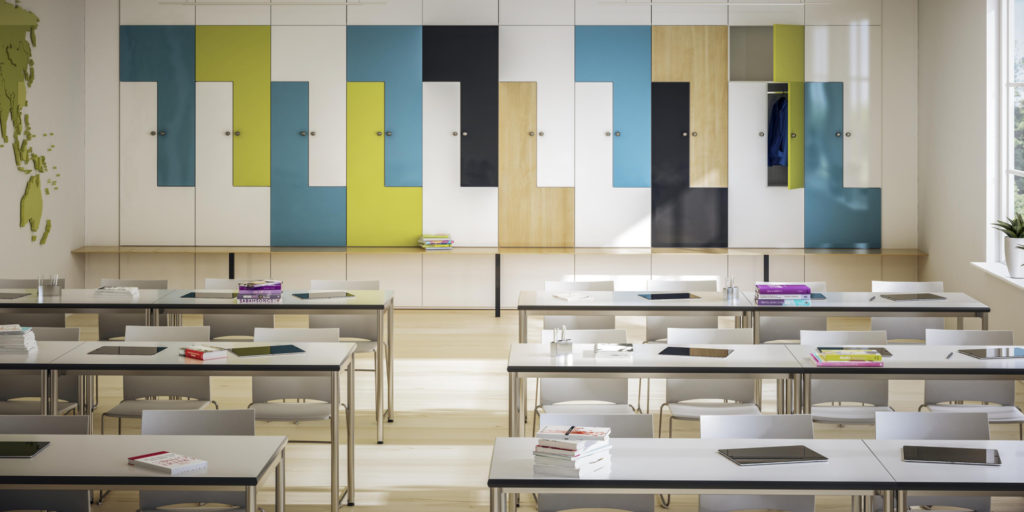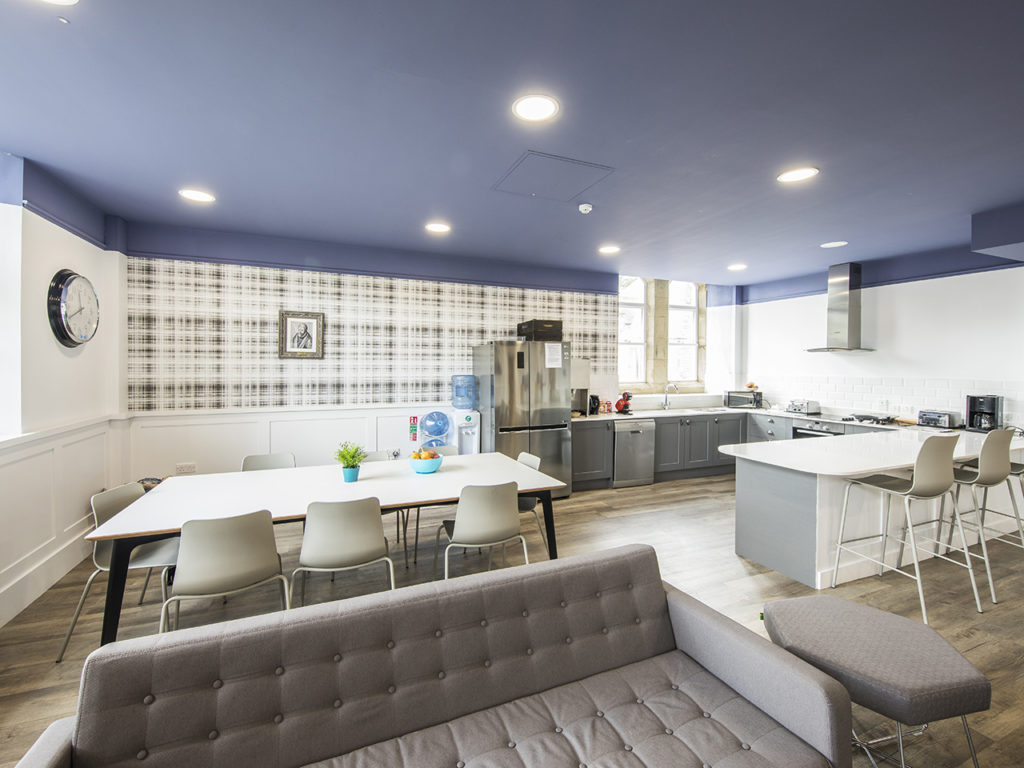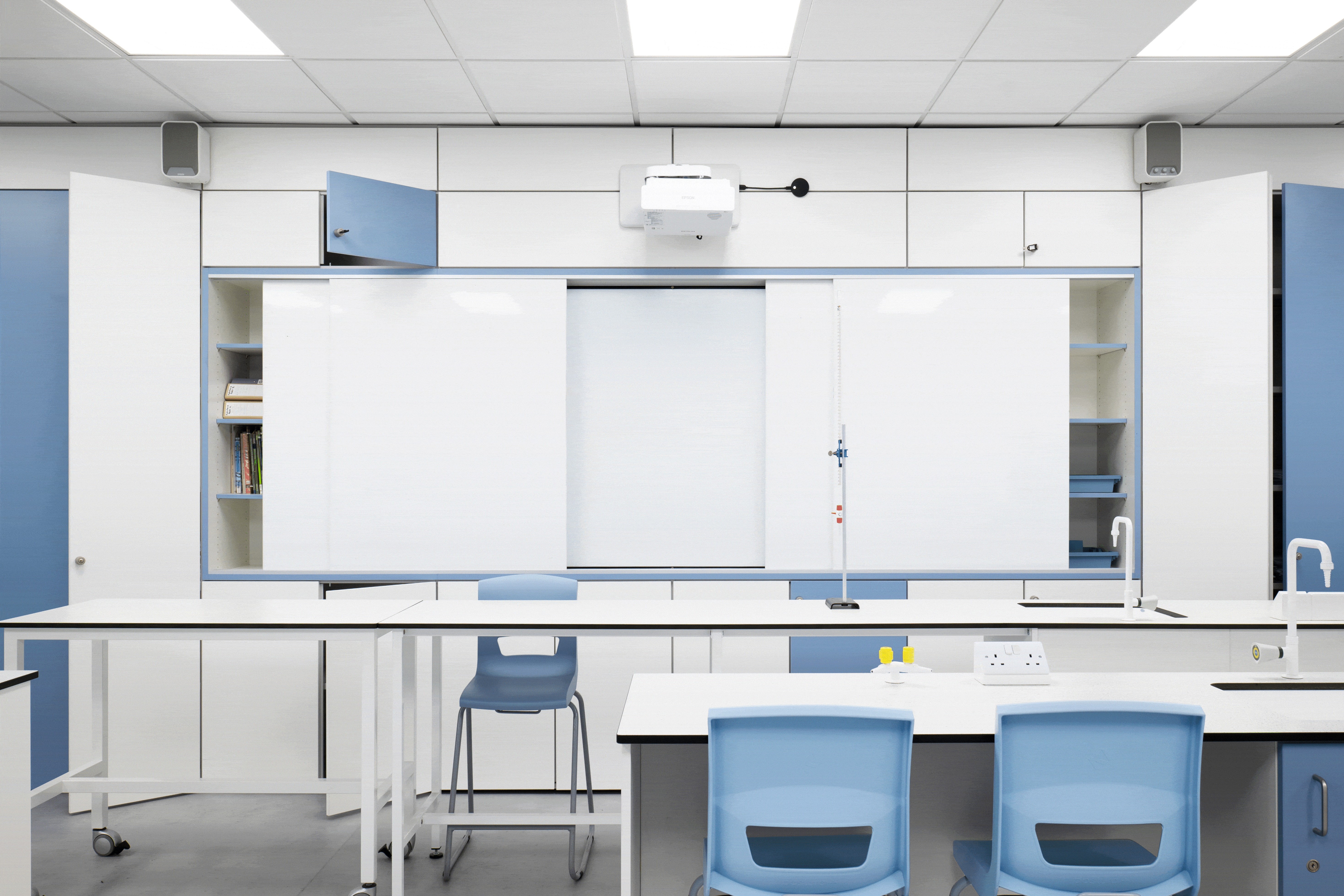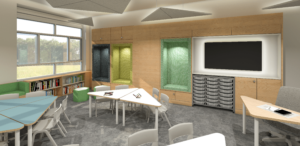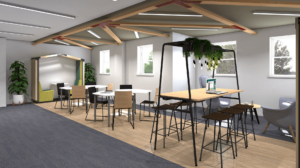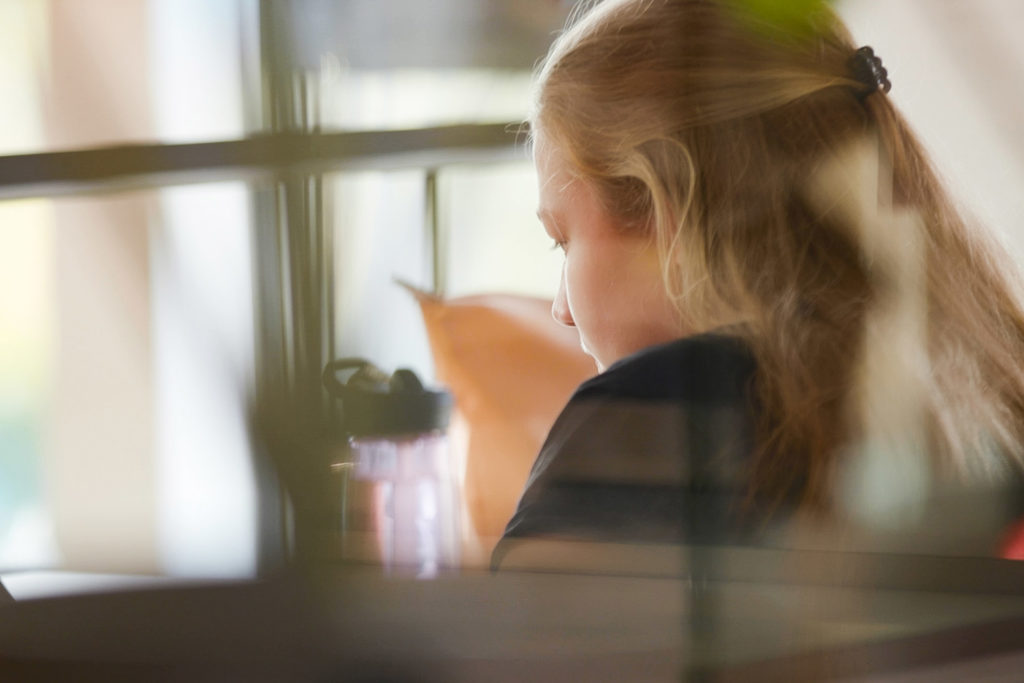
Teacher Training Spaces
How should classrooms be best set up for newly qualified teachers? Keep spaces and layouts flexible. Multi-use areas are so much easier for new teachers to inhabit in a calm, orderly manner where they know what is happening in all classroom zones. Whether using the teaching from the front or the ‘guide on the side’ approach, new teachers need to know they are in control and students can see and hear them without having to shout for attention.
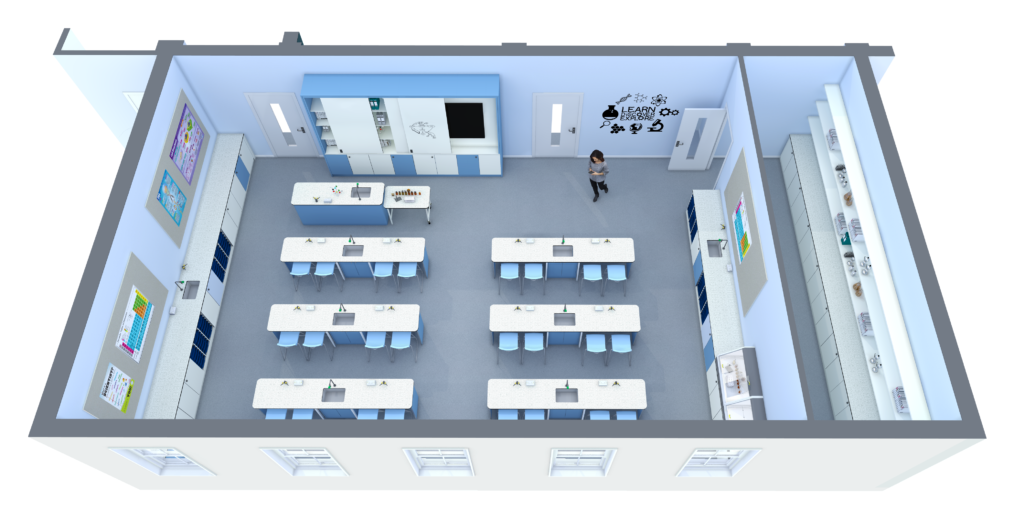
Our Top 5 Teacher Training Tips
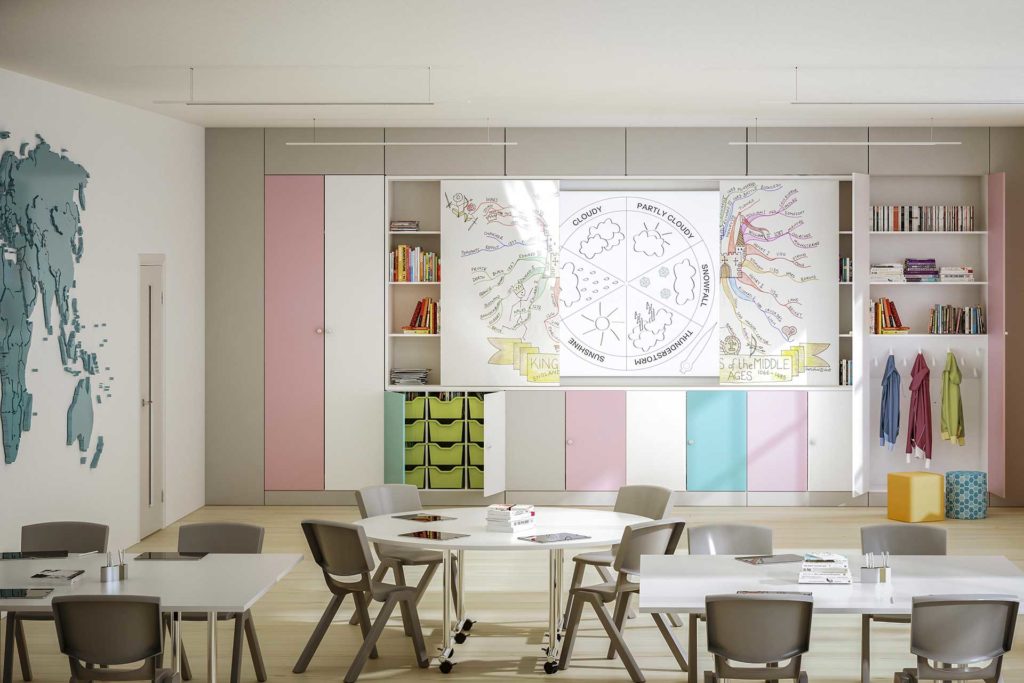
What Does The Ideal Teacher Training Classroom Look Like?
1. Decorate your classroom with interesting, inspiring work from your students so they can be proud of their achievements
2. Keep it fresh and uncluttered with subtle storage around the room, such as teaching walls, hidden lockable drawers and shelving for health and safety as well as looking far cleaner and clearer
3. Walls and floors should be covered for maximum acoustic benefits, to ensure your teachers can talk at a normal level for their best health and attendance
4. Site the classrooms in areas with natural lighting and reduce glaring strip lights that can cause headaches and irritability
